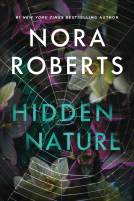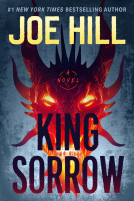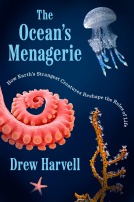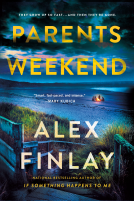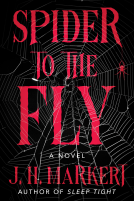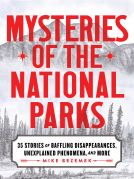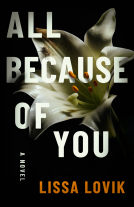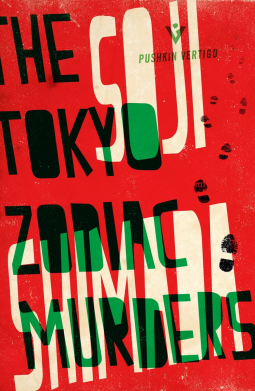
The Tokyo Zodiac Murders
by Soji Shimada
This title was previously available on NetGalley and is now archived.
Send NetGalley books directly to your Kindle or Kindle app
1
To read on a Kindle or Kindle app, please add kindle@netgalley.com as an approved email address to receive files in your Amazon account. Click here for step-by-step instructions.
2
Also find your Kindle email address within your Amazon account, and enter it here.
Pub Date Sep 15 2015 | Archive Date Jul 29 2015
Pushkin Press | Pushkin Vertigo
Description
An amateur detective races to solve a decades-old murder mystery in this “bloody and bizarre” Japanese crime novel with a twist hailed as “one of the most original” (Daily Mail).
Astrologer, fortune teller, and self-styled detective Kiyoshi Mitarai must solve a macabre murder mystery that has baffled Japan for 40 years—in just one week.
With the help of his freelance illustrator friend, Kiyoshi sets out to answer the questions that have haunted the country ever since: Who murdered the artist Umezawa, raped and killed his daughter, and then chopped up the bodies of six others to create Azoth, ‘the perfect woman’?
With maps, charts, and other illustrations, this story of magic and illusion—pieced together like a great stage tragedy—challenges the reader to unravel the mystery before the final curtain falls.
This quintessential Japanese “logic mystery”—eerie, gory, and intriguing—combines the puzzle-solving of Golden Age Western detective fiction with elements of shocking horror and dark humor.
Advance Praise
'Intricately constructed and entertainingly exotic' - The Japan Times
'The great Soji Shimada virtually invented the "logic problem" sub-genre ' - Guardian Top 10 Locked Room Mysteries (No. 2)
'Intricately constructed and entertainingly exotic' - The Japan Times
Available Editions
| EDITION | Other Format |
| ISBN | 9781782271383 |
| PRICE | $14.95 (USD) |
Average rating from 42 members
Featured Reviews
 amy f, Reviewer
amy f, Reviewer
One of the best locked room mysteries I have read. If you like Sherlock Holmes, you'll love this and once you start reading you won't want to put it down.
Great story, well written and enjoyable even if at the beginning it was not so easy to follow with all these similar Japanese names.
Bella storia, ben scritta e godibile anche se all'inizio é stata difficile da seguire per via dei nomi giapponesi che si somigliano un po' tutti.
THANKS TO NETGALLEY AND PUSHKIN PRESS FOR THE PREVIEW!
 Victoria K, Librarian
Victoria K, Librarian
Superb locked-room mystery by the Japanese master. Translation appears to be well-done.
 Educator 211653
Educator 211653
Thank you Net Galley. A gorgeous traditional who-dun-it. Besides a locked room there is also the 40 year vendetta/curse on the family, accompanied by clues - if you can figure it out. Enjoyed it very much.
 Karen C, Reviewer
Karen C, Reviewer
Honkaku is a subgenre of Japanese Crime Fiction that came into being sometime in the early 1920's. The original definition was "a detective story that mainly focuses on the process of a criminal investigation and values the entertainment derived from pure logical reasoning". The term was coined to clearly differentiate Honkaku mystery fiction from other subgenres and it was used for both local and Western writers, although a distinct Japanese form became increasingly common in the 1950's.
Adding depth to long tradition, the author of THE TOKYO ZODIAC MURDERS, Soji Shimada has written over 100 mystery novels.
Knowing the background to the form isn't required to understand the structure of this novel, although it does help to realise that it is informed by such a rich tradition. Written in a number of parts or acts, THE TOKYO ZODIAC MURDERS firstly introduces the reader to a bizarre prologue - a note written in the mid 1930's by artist Umezawa outlining detailed plans and justifications for the murder of six of his daughters and nieces to create the figure of a supreme goddess Azoth. Disturbing and frankly very odd, the voice in this section is manic.
In the next part, 40 years on from the date of the note, the reader discovers that the six daughters referred to in the plan were indeed murdered, mutilated exactly as outlined. Which would have been a straight-forward case had one other daughter not predeceased her relatives, and Umezawa himself died before the girls. This is revealed as Kazumi Ishioka explains the background of the mystery that has baffled Japan since it occurred to his friend and self-styled detective Kiyoshi Mitarai. There investigation occurs in two parts from here - and along the way Mitarai accepts a threat / challenge which means that he must not only solve the puzzle, but do it to a schedule. To do that Mitarai and Ishioka travel through Japan, following where the clues lead them.
Those clues are laid out in a very traditional manner allowing the reader to discover them as the main detecting characters do. In an interesting touch the point at which the detective has solved the puzzle, the story switches to a note from the author letting the reader know that they now have everything needed as well. And it is actually solvable if you really pay attention, and take a logical and considered approach (this reader kind of worked out who, but admits it was more by good luck than good management, mathematical formula of any kind being the ultimate mystery after all).
Because the point of this style of novel is to present a puzzle, there's not necessarily a lot of character development alongside that, although the final resolution is markedly sad and moving. The detecting pair's travels around Japan do, however, give it a strong sense of place as well as many insights into the culture and customs of the country. The centrality of the Zodiac to the mystery does mean that some of the patterns - such as the dates of birth of the victims, the relationship of them to the structure of the Supreme Goddess to be built, and the layout of the closed room mystery in the murder of Umezawa are made more fathomable by the insertion of diagrams.
Puzzle upon puzzle THE TOKYO ZODIAC MURDERS is intricate and utterly fascinating, as an example of Honkaku and the culture from which it sprang, as well as providing sufficient puzzles to be solved to keep a reader happily occupied (and slightly confused) right to the last page.
 Reviewer 275318
Reviewer 275318
The Tokyo Zodiac Murders by Soji Shimada is one hell of an amazing book!
The mystery is brilliant and the narrative charming, engaging and totally addictive. I was drawn in completely after only the the first pages of the book and didn't want to put it down.
The book starts off with the testament and last will composed by Heikichi Umezawa, a famous artist who was intent on creating "the perfect /most beautiful woman" (which he named Azoth) by using the body parts of his daughters and nieces.
With the beginning of the actual story we meet private detective Kiyoshi Mitarai and his associate, Kazumi Ishioka, who take us along on their journey of solving the puzzle of Umezawa's death, as well as the mystery of the serial killings he was meant to perform, but died beforehand.
The Tokyo Zodiac Murders is one of the best detective novels I had the pleasure of reading! Highly recommended! Lovers of mystery, crime and detective stories will adore this!
 Karen A, Librarian
Karen A, Librarian
Perfect for lovers of Scandinavian mysteries looking to branch out.
 Susan R, Reviewer
Susan R, Reviewer
This novel is being released under the new ‘Pushkin Vertigo’ imprint – which aims to re-release international crime classics written in the years between the 1920’s and 1970’s. “The Tokyo Zodiac Murders,” is the first of over two dozen novels featuring Kiyoshi Mitarai and is written in the popular Japanese Honkaku subgenre of mysteries; very much focused on plotting and clues and where the reader is drawn into participating in solving the crime before the detective.
In some ways, this book reminded me of mysteries I have read from the 1920’s, such as “The Cask,” by Freeman Wills Croft, where you are almost walked through the crime, clue by clue. As such,, “The Tokyo Zodiac Murders,” appeared a little dry at first, but I was soon thoroughly immersed in the novel and really fascinated by the plot and the characters.
The title of the books comes from a series of murders which took place in 1936 and remained unsolved when the narrator of the book, Kazumi Ishioka, tells his friend, Kiyoshi Mitarai, about them. The murders involve an artist, named Heikichi Umezawa, who believed that he was possessed by the devil and who dreamt of creating the perfect woman – ‘Azoth’ – by killing six young women (his daughters and nieces) and combining their body parts. However, Umezawa is murdered in his studio and the murders took place after his death…
This is a classic, locked door mystery and involves Ishioka and Mitarai discussing the murders in 1979, before setting out to solve them. As I mentioned before, the first part of the book involves Ishioka relating what happened in some detail and can come across as a little dry. However, this book does become very engaging. There are delightful digressions into other subjects, such as the novels of Sherlock Holmes, and dashes across the country to follow up clues; as well as exhortations from the author himself to try to beat the fictional detectives and solve the crime.
This is a charming read and the Pushkin Vertigo series looks very promising indeed. I look forward to reading more – both from Pushkin Vertigo and from this author, Soji Shimada. Lastly, I received a copy of this book from the publisher, via NetGalley, for review.
 Daniela T, Reviewer
Daniela T, Reviewer
To my own disappointment, I couldn’t outsmart the author! Although I suspected bits, I wasn’t able to solve the case. However, I tried really hard, and it was a fun ride. The resolution of the case was marvellous, and satisfying in a weird way. Soji Shimada provides everything the reader needs to solve the Tokyo Zodiac Murders: clues, maps, and charts. This book is not a psychological thriller; it belongs to a subgenre of murder mysteries called “honkaku”. It focuses on plotting, rather than characters, so the result is a fast-paced story told mostly through dialogues. Sometimes, these dialogues between Kiyoshi and Ishioka seemed to me a bit weird and forced, but it might be some idiosyncratic feature I couldn’t grasp because of the distance between Japanese culture and my own. I did enjoyed getting to know more about Japan: all the facts mentioned about history, culture, and places the characters visited and Ishioka’s impressions about them were quite interesting. Lastly, I absolutely loved that the author was such a tease with his Entr’actes; his messages were quite provoking! I hope I can grab Kiyoshi’s next adventure soon!
 Donde acaba e, Book Trade Professional
Donde acaba e, Book Trade Professional
Locker-room detective mistery. But not just that, the plot itself is superb and the ending of the novel makes you desire to start reading from the beginning over again.
